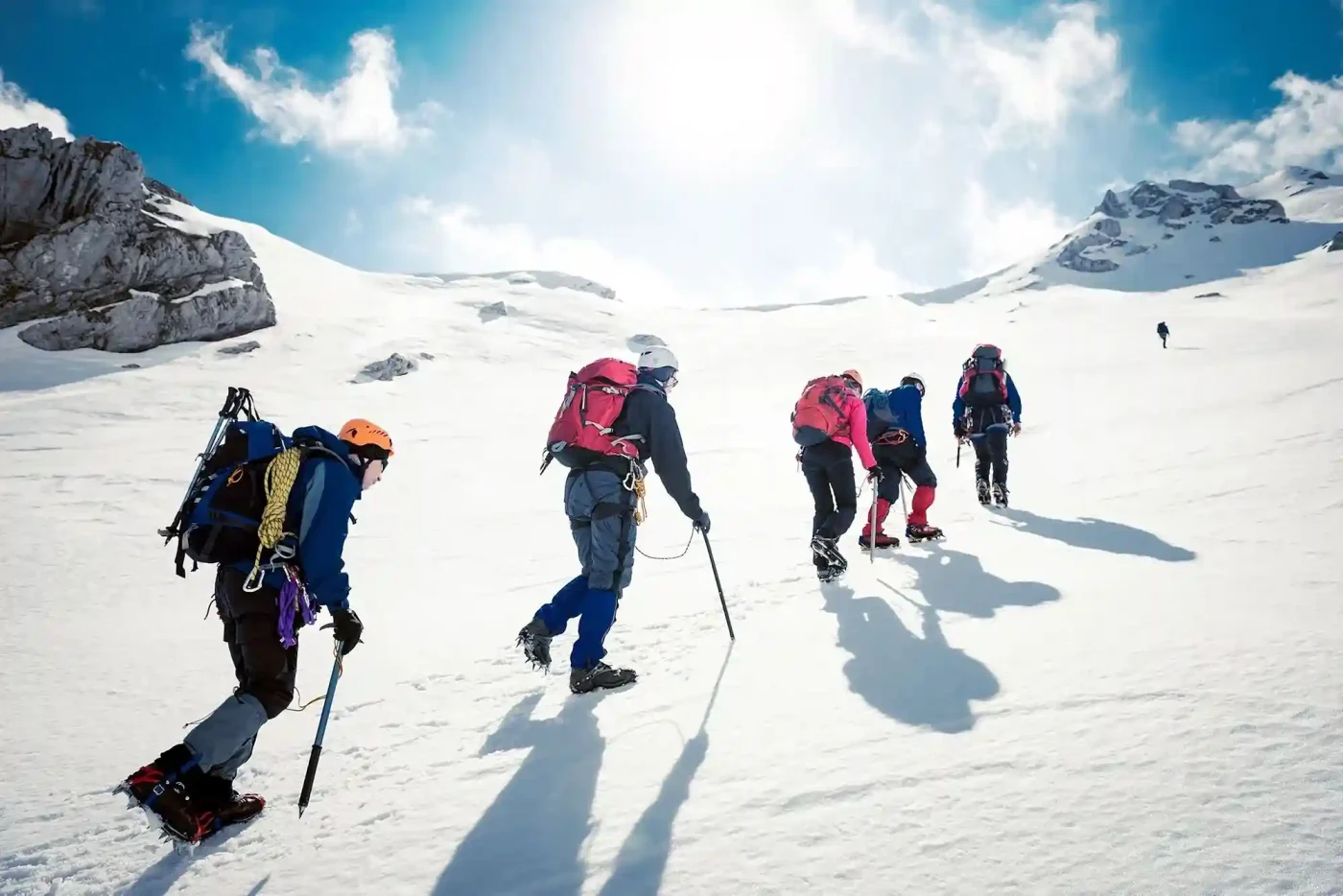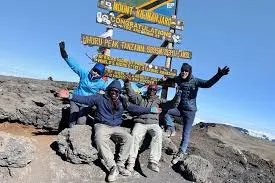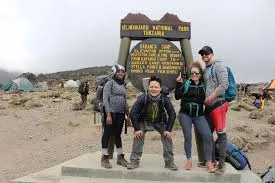Kilimanjaro Mortality Rates: What the Numbers Say
Climbing Kilimanjaro is generally safe, but it’s important to understand the risks and be prepared. Most fatalities are related to altitude sickness, pre-existing medical conditions, or insufficient acclimatization, rather than technical climbing hazards. Monitoring your health, ascending gradually, staying well-hydrated, and following your guide’s instructions can significantly reduce risk. Below is a detailed overview of Kilimanjaro mortality rates, what the numbers reveal, and key safety considerations for climbers on 6–9 day treks with Capable Africa Tours.
Plan Your Safe Climb Now
Understanding Kilimanjaro Mortality Rates
Mount Kilimanjaro, standing at 5,895 meters, attracts over 35,000 climbers annually. While the adventure is thrilling, it’s natural to wonder about the risks. The good news? Kilimanjaro’s mortality rate is low, estimated at 0.01–0.03%, or roughly 10–30 deaths per 100,000 climbers. With proper preparation and a trusted operator like Capable Africa Tours, these risks are minimized. Below, we break down the numbers, causes, and safety measures to help you climb with confidence.
Kilimanjaro Mortality
| Metric | Value |
|---|---|
| Annual Climbers | 35,000–50,000 |
| Estimated Annual Deaths | 3–10 |
| Mortality Rate | 0.01–0.03% (10–30 per 100,000) |
| Primary Cause of Death | Altitude-related illnesses (70–80% of cases) |
| Secondary Causes | Accidents, falls, rockslides (20–30%) |
| Summit Success Rate | 65–90% (varies by route) |
Most fatalities on Kilimanjaro are linked to altitude-related conditions like Acute Mountain Sickness (AMS), High Altitude Pulmonary Edema (HAPE), and High Altitude Cerebral Edema (HACE). These are often preventable with proper acclimatization, which is why Capable Africa Tours prioritizes longer routes like the 8-day Lemosho for a gradual ascent. Other risks, such as falls or rockslides, are rare but can occur on steeper sections like the Barranco Wall. Our experienced guides ensure safe navigation and constant monitoring.
Main Causes of Mortality on Kilimanjaro
The main causes of mortality on Kilimanjaro are mostly altitude-related issues. Acute Mountain Sickness (AMS) can escalate to High Altitude Pulmonary Edema (HAPE) or High Altitude Cerebral Edema (HACE), both of which are life-threatening if not treated promptly. Other factors include exhaustion, dehydration, and pre-existing medical conditions. Proper acclimatization, pacing, and hydration are key to staying safe. Here’s a detailed look at the primary risks and how Capable Africa Tours mitigates them:
Common Causes and Prevention
- Acute Mountain Sickness (AMS): Affects 50–75% of climbers to varying degrees. Symptoms include headaches, nausea, and fatigue. Prevention: Slow ascent, hydration, and Diamox if prescribed.
- High Altitude Pulmonary Edema (HAPE): Fluid in the lungs, affecting 1–2% of climbers. Symptoms include shortness of breath and coughing. Prevention: Gradual acclimatization and oxygen supplementation.
- High Altitude Cerebral Edema (HACE): Brain swelling, rare but serious (<1%). Symptoms include confusion and loss of coordination. Prevention: Immediate descent and medical intervention.
- Accidents (Falls/Rockslides): Rare, occurring on steep sections. Prevention: Guided navigation, proper footwear, and trekking poles.
- Cardiac Issues: Uncommon, linked to pre-existing conditions. Prevention: Pre-trek medical clearance and fitness training.
Capable Africa Tours reduces these risks through daily health checks, pulse oximeter monitoring, and emergency oxygen tanks. Our guides are trained in wilderness first aid, ensuring rapid response to any issues.
Watch: Safe Climbing with Capable Africa Tours
See how Capable Africa Tours ensures your safety on Kilimanjaro with expert guides, health monitoring, and top-notch equipment in this short video.
Safety Measures for a Secure Kilimanjaro Climb
To stay safe on Kilimanjaro, always acclimatize gradually, stick to marked trails, and listen to your body—don’t push through severe altitude sickness. Use proper gear, stay hydrated, and rely on experienced guides. Keep your group informed of your pace and health, and have a clear emergency plan. Small precautions go a long way in keeping your climb secure. Here’s how we keep you safe:
Safety Protocols
- Experienced Guides: Certified guides with wilderness first aid training lead every trek, with a 1:2 guide-to-climber ratio.
- Daily Health Checks: Pulse oximeters and symptom assessments monitor oxygen levels and AMS signs twice daily.
- Emergency Equipment: Oxygen tanks, first aid kits, and stretchers are standard on all treks.
- Longer Itineraries: 7–8 day routes like Lemosho or Machame improve acclimatization, boosting summit success to 85–90%.
- Evacuation Plans: Coordination with Kilimanjaro National Park rangers for rapid helicopter or ground evacuation if needed.
- Pre-Trek Briefings: Detailed sessions cover altitude risks, packing, and fitness preparation.
Tips for Climbers to Stay Safe
- Train Adequately: Build endurance with cardio (running, cycling) and strength exercises (squats, lunges) 4–5 times weekly.
- Hydrate Constantly: Drink 3–4 liters of water daily to combat altitude effects.
- Listen to Your Body: Report symptoms like headaches or fatigue to your guide immediately.
- Pack Smart: Use waterproof boots, layered clothing, and trekking poles for stability.
- Choose a Reputable Operator: Capable Africa Tours’ 90% summit success rate reflects our safety commitment.
Climb Kilimanjaro Safely with Capable Africa Tours
Ready to conquer Kilimanjaro with confidence? Capable Africa Tours offers expert-guided treks with top safety standards, 90% summit success rates, and eco-friendly practices. Book now for a secure, unforgettable adventure to Uhuru Peak!
- 90% summit success rate with 8-day itineraries
- Daily health checks and emergency equipment
- Experienced guides trained in wilderness first aid
- Eco-conscious treks supporting local communities
- Gear rentals for a hassle-free experience
Limited spots for safe Kilimanjaro climbs—book today to secure your adventure!
Plan Your Climb Now


